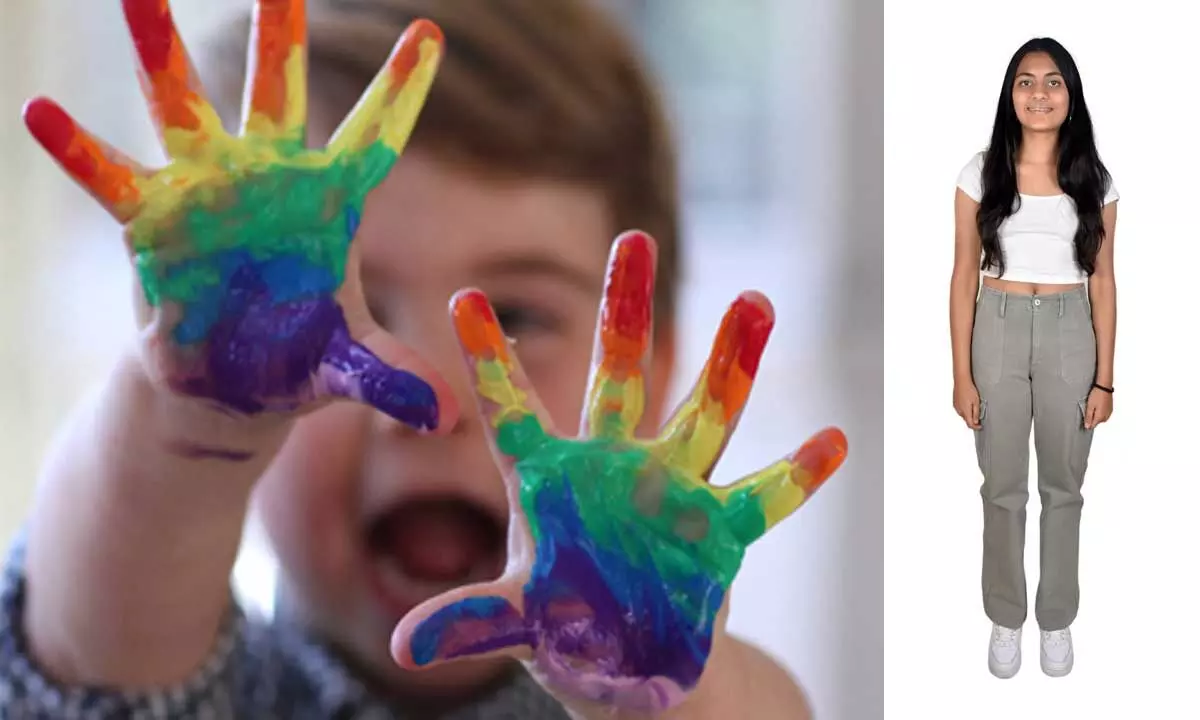How children express themselves through art

Young Hans spoke with Manya Roongta, the Co-Founder of Children’s Art Museum of India; she shared how art helps kids express their feelings.
Art is an influential medium for kids to express their feelings, especially when they lack the right words. Colors, shapes, and icons become their vocabulary, a method for revealing their inner thoughts that adults may overlook. It's not solely about sketching and coloring; it's a dialect, a gateway to their deepest emotions and ideas. Young Hans spoke with Manya Roongta, the Co-Founder of Children’s Art Museum of India; she shared how art helps kids express their feelings.
She said, words can be restrictive, but colors have no limits. A child may struggle to say "I'm upset," but they can choose a vibrant red crayon and color all over the paper, conveying their bottled-up feelings in ways that verbal language can't.
And then there are symbols, those hidden rules that children define and perform. A bright yellow sun spray on a blanket may signify pure joy, while stormy clouds with heavy rain can represent sadness or fear. The numbers give you a new expression. A child who feels safe and loved can draw a perfect circle, symbolizing wholeness and unity.
Check out how you define your feelings through colours and shapes
It is important to remember that there are no set rules about how children express themselves through art. Their interpretation of colors, patterns and symbols is unique and individual. While there are general associations, individual interpretations can vary.
● Warm tones such as red, orange and yellow have the ability to express emotions of happiness, excitement and vitality. Just envision the delight on a child's face as they enthusiastically paint a sun using these shades!
● Cool colors like blue, green and purple are commonly associated with feelings of tranquility, serenity and occasionally even melancholy. Picture a landscape adorned with these hues that beckons you to unwind and take a deep breath.
● Primary colors. Red, yellow and blue. Serve as means for expressing emotions both positive and negative. A child may employ them to depict anger, frustration or profound love.
● Darker shades such as black and brown can symbolize sadness, fear or even anger. However, it is important to remember that not all darkness conveys negativity. For instance, a child might utilize black to portray the night sky. A time for introspection and contemplation.
● When it comes to shapes; circles are often perceived as symbols of unity, completeness and protection. Just imagine a child drawing an encompassing circle around their loved ones; illustrating their sense of security and belongingness.
● Squares symbolize stability, order and structure. Imagine a child carefully building a tower with blocks showcasing their desire for control and organization.
● Triangles can convey energy, action and direction. A child may construct a triangular kite soaring in the sky embodying their hopes and aspirations.
● Lines on the hand have meanings. They can represent movement, flow and even separation. Observe how a child uses lines to create a picture book that guides your gaze through the story they wish to tell.
● Children frequently utilize symbols to convey their emotions, experiences and personal significance. For instance, a child might sketch a sun to express joy or portray a thundercloud to depict sadness.
It's important to keep in mind that there aren't any fixed guidelines when it comes to how children articulate themselves through art. Their understanding of colors, patterns and symbols is distinct and personal. As adults our responsibility is to create a nurturing atmosphere where they can openly delve into their emotions using this artistic language.















